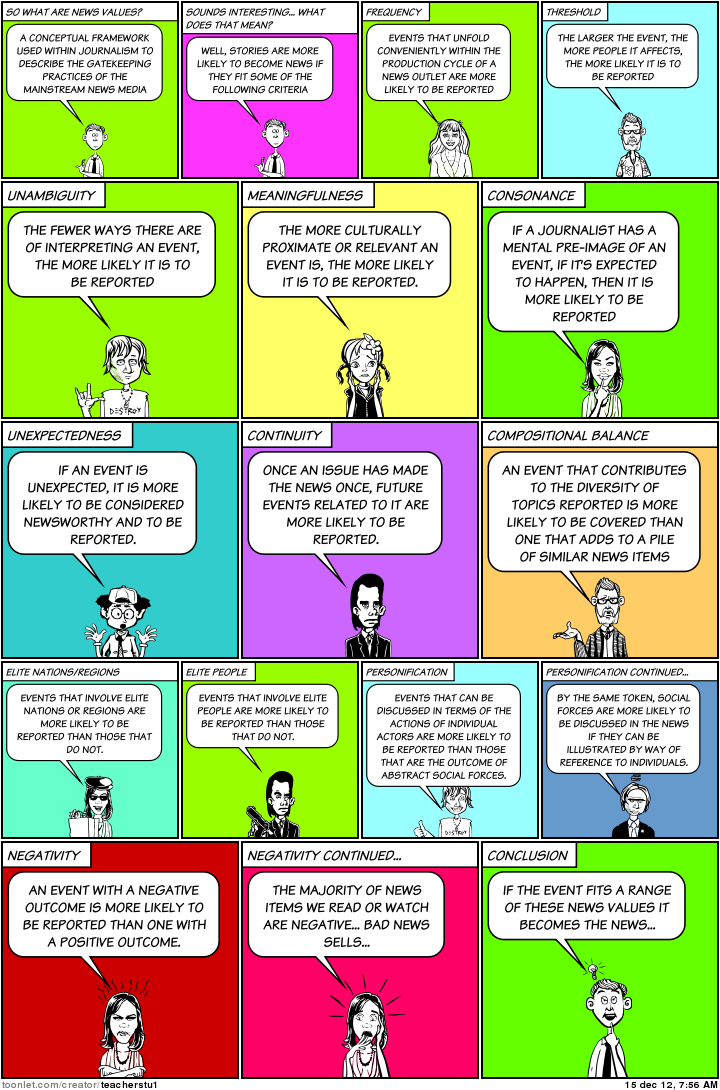Galtung and Ruge – News Values: an update by Prof. Galtung (2014)
News–values and news–criteria, determine how much prominence a news story is given by a media outlet and explain the attention it is given by the audience.
Find the complete list of news-values below. Click on the image below to see it clearly.
Galtung and Ruge, in their seminal study in the area put forward a system of twelve factors describing events that together are used as a definition of ‘newsworthiness’. Focusing on newspapers and broadcast news, Galtung and Ruge devised a list describing what they believed were significant contributing factors as to how the news is constructed. Their theory argues that the more an event accessed these criteria the more likely it was to be reported on in a newspaper. Furthermore, three basic hypotheses are presented by Galtung and Ruge: the additivity hypothesis that the more factors an event satisfies, the higher the probability that it becomes news; the complementarity hypothesis that the factors will tend to exclude each other; and the exclusion hypothesis that events that satisfy none or very few factors will not become news.
Driven by his key interest, “HOW CAN JOURNALISM CONTRIBUTE TO REDUCING VIOLENCE AND INCREASING EMPATHY WITHIN & BETWEEN HUMAN SOCIETIES”, Johan Galtung developed the insights from the original empirical study on News Worthiness further into the discipline of Peace Journalism.
Introduction to Peace Journalism by Prof. Galtung
Peace Journalism part 1
Peace Journalism part 2
Peace Journalism part 3
Peace Journalism part 3
Peace Journalism part 4
Peace Journalism part 5
Peace Journalism part 6
Peace Journalism part 7
Peace Journalism part 8
Peace Journalism part 9
Peace Journalism part 10
Peace Jouanlism part 11
Peace Jouanlism part 12
Peace Jouanlism part 13


![[X]](/img/dialog-close.png)
2 thoughts on “Galtung and Ruge – News Values: an update by Prof. Galtung (2014)”
Comments are closed.